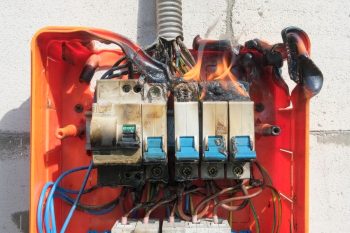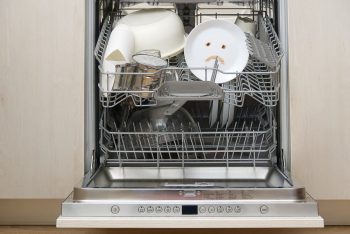
White refrigerators, with their clean and timeless appeal, have been a staple in kitchens for decades. But, have you ever wondered what they are made of? In this comprehensive guide, we delve into the materials used in the manufacturing of white fridges, their functionality, design, and the environmental impacts they present.
White fridges are primarily made from a combination of metals, plastics, and insulating foams. The cooling system components are typically made of aluminum, copper, or an alloy. The core structure is made of sheet metal, sandwiched between an interior cabinet made of plastic, and an outer shell. The white color is achieved through the use of paint or enamel coatings on the outer shell.
Material Components of White Fridges
White fridges, like other refrigerators, are primarily made from a combination of metals, plastics, and insulating foams. The main components of the cooling system – the compressor, condenser, coils, and fins – are typically made of aluminum, copper, or an alloy. Copper is particularly preferred for tubing due to its excellent thermal conductivity and resistance to corrosion.
The core structure of a fridge is usually made of sheet metal, sandwiched between an interior cabinet made of polystyrene plastic, and an outer shell. The outer cabinet and door of the fridge are also made of sheet metal, which can be either welded or clinched together.
Plastics play a significant role in refrigerator production. Various types of plastics such as polyurethane (PU), polystyrene (PS), polypropylene (PP), styrene-butadiene-acrylonitrile copolymer (ABS), and polyethylene (PE) account for almost 90% of the plastic parts used in refrigerators.
Polyurethane foam is widely used in the insulation layer of refrigerator doors and boxes due to its low thermal conductivity and good processing performance. It helps maintain the appliance’s internal temperature and reduce energy consumption.
The white color of the fridge is achieved through the use of paint or enamel coatings on the outer shell. These coatings provide a smooth, easy-to-clean surface and give the fridge a clean, fresh appearance.
Why These Materials?
The materials used in fridge production are sourced from various suppliers, including specialty suppliers that collect and refine plastic from discarded refrigerators. The choice of materials is based on factors such as durability, insulation properties, resistance to corrosion, and ease of cleaning.
Metals like steel, aluminum, and copper are chosen for their strength, durability, and resistance to corrosion. Plastics are used for their lightweight, durable, and easy-to-clean properties. Polyurethane foam, which provides effective thermal insulation, helps to maintain the appliance’s internal temperature and reduce energy consumption.
Manufacturing Process
The manufacturing process of a white fridge is similar to that of other colored fridges, with the main difference being the color and finish of the exterior panels. The exterior panels of the fridge are painted or finished in the desired color. For white fridges, the panels are painted white, while for other colored fridges, the panels are painted in the chosen color.
Environmental Impact
Fridge production involves environmental impacts associated with the materials used in their production, operation, and disposal. Concerns include refrigerants, energy consumption, waste and disposal, and e-waste. To mitigate these environmental impacts, it is essential to promote proper disposal and recycling of old fridges, develop more energy-efficient and environmentally friendly refrigeration technologies, and encourage the use of alternative refrigerants with lower global warming potentials.
Maintenance and Care
White fridges require regular maintenance and care to keep them clean and functioning efficiently. This includes regular cleaning of the interior and exterior, checking and cleaning the door gasket, defrosting and cleaning the freezer, vacuuming the condenser coils, checking the temperature, and deodorizing.
Conclusion
White fridges, like other appliances, are made from a combination of carefully chosen materials designed to optimize their functionality, durability, and aesthetic appeal. Understanding what your white fridge is made of can help you appreciate the complex engineering and design that goes into creating this essential household appliance.
Frequently Asked Questions
What is the lifespan of a white fridge?
The average lifespan of a refrigerator, including a white one, is between 10 to 20 years. This can vary based on the brand, model, usage, and maintenance.
Are white fridges more prone to staining or discoloration?
White fridges, like any other appliances, can show stains or discolorations over time, especially if not cleaned regularly. However, the enamel or paint finish on white fridges is quite durable and easy to clean, which helps maintain their appearance.
Are white fridges energy-efficient?
The color of a fridge, including white, doesn’t directly affect its energy efficiency. Energy efficiency primarily depends on the fridge’s design, insulation, and the efficiency of its cooling system. However, modern refrigerators, regardless of color, are generally more energy-efficient than older models.
Can the paint on a white fridge peel off?
The paint or enamel finish on a white fridge is quite durable and is designed to withstand the rigors of daily use. However, over time, and with heavy use or damage, the finish can chip or peel. Regular cleaning and gentle treatment can help maintain the finish.
How can I dispose of my old fridge responsibly?
Old fridges should be disposed of responsibly due to the environmental impact of the materials they contain. Contacting a local waste disposal service or your city’s waste management department can provide information on how to properly recycle or dispose of your old fridge. Some retailers also offer take-back programs when you purchase a new fridge.












